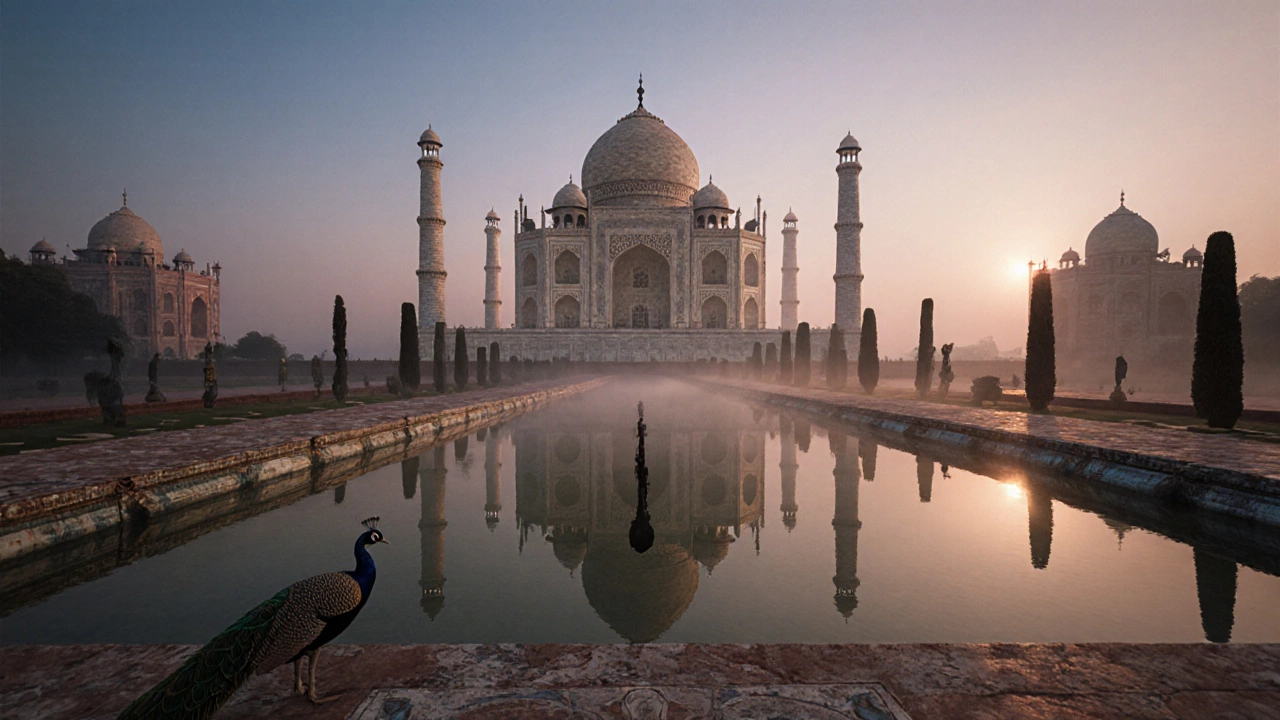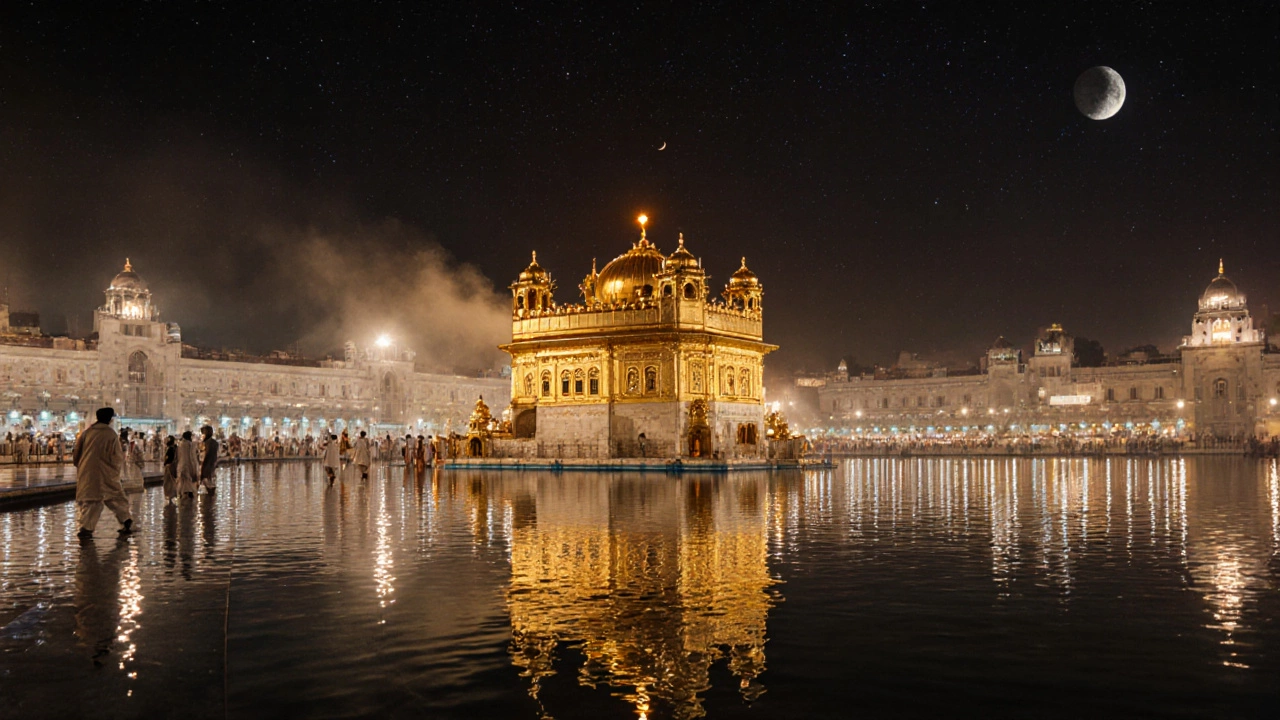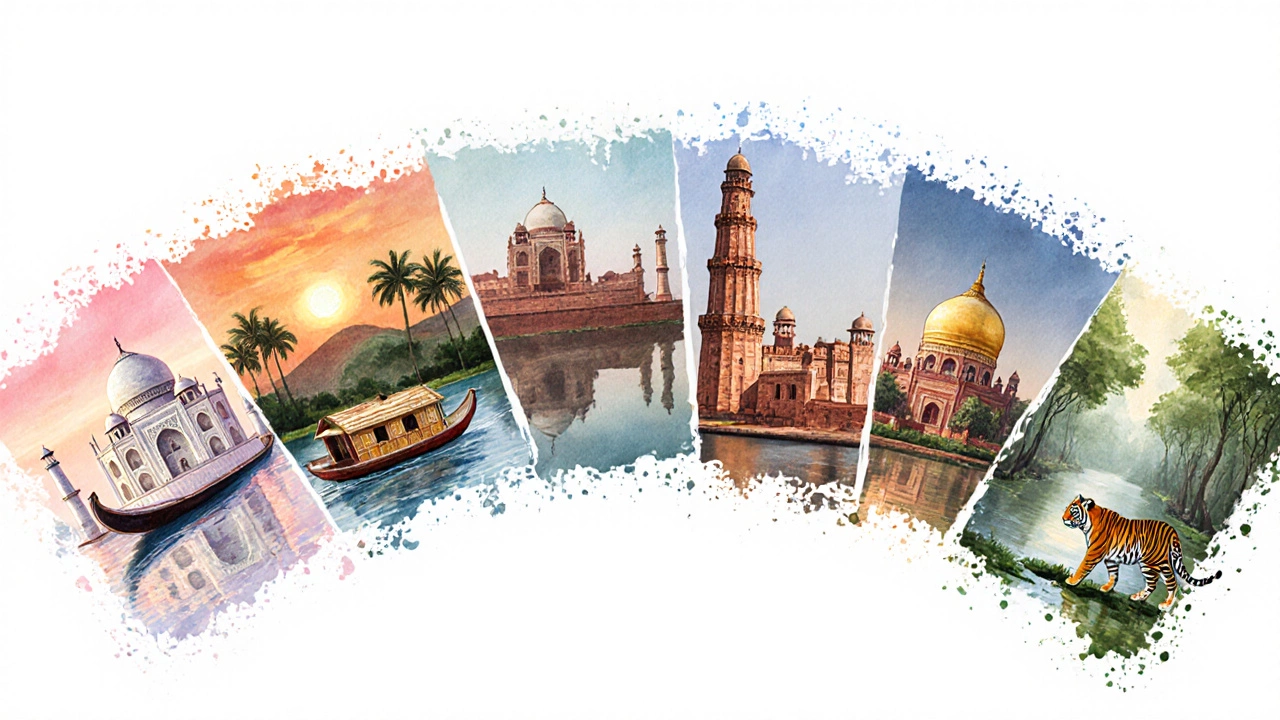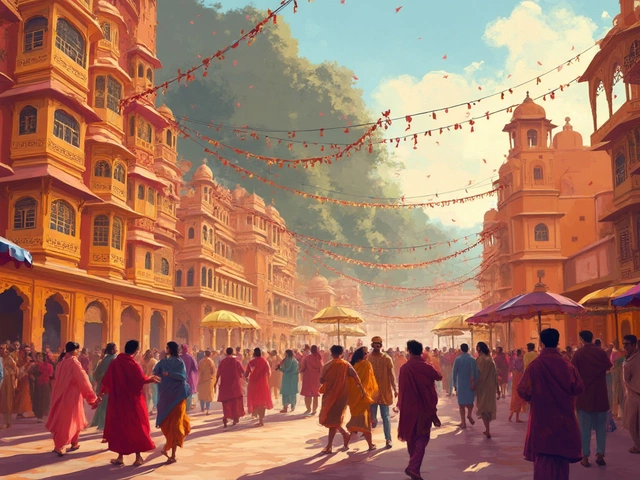Best Time Calculator for Indian Attractions
Select Attractions
Attraction Details
Taj Mahal
Oct-MarAgra, Uttar Pradesh
Best: Early morning, avoid crowds
Amber Fort
Oct-MarJaipur, Rajasthan
Best: Cool evenings, elephant ride recommended
Kerala Backwaters
Oct-MarAlappuzha, Kerala
Best: Dry season, avoid monsoons
Qutub Minar
Oct-MarDelhi
Best: Early morning, clear views
Golden Temple
Year-roundAmritsar, Punjab
Best: Evening aarti ceremony
Ajanta & Ellora
Oct-MarAurangabad, Maharashtra
Best: Cool weather, avoid monsoons
Sundarbans
Nov-FebWest Bengal
Best: Dry season for wildlife spotting
Optimal Travel Window
When you think of India, a kaleidoscope of colors, history, and landscapes instantly pops up. From sparkling marble monuments to lush backwaters, the country offers a lineup of famous tourist attractions India can boast. Below you’ll find a curated guide that walks you through the most iconic spots, practical travel tips, and a quick comparison so you can pick the perfect stop for your itinerary.
1. Taj Mahal - The Iconic Wonder
Taj Mahal is a white marble mausoleum in Agra, commissioned by Emperor Shah Jahan in 1632 to honor his wife Mumtaz Mahal. Recognized as a UNESCO World Heritage Site, it draws over 7 million visitors a year. Its perfect symmetry, intricate pietra dura inlay, and the reflective pool create a breathtaking view at sunrise and sunset. Booking a guided tour early in the morning helps you beat the crowds and enjoy cooler temperatures.
2. Amber Fort - Royal Heritage of Jaipur
Amber Fort is a massive hilltop fort in Rajasthan, built from red sandstone and marble, showcasing Mughal and Rajput architecture. Highlights include the Sheesh Mahal (Mirror Hall), ornate frescoes, and an elephant ride up the steep incline. The fort offers panoramic views of the Aravalli hills and the city of Jaipur, earning it a spot on the UNESCO tentative list.
3. Kerala Backwaters - Waterway Adventure
Kerala Backwaters is a network of lagoons, lakes, and canals that stretch along the Malabar Coast, best explored on traditional houseboats called kettuvallams. Floating through palm-fringed waters, you’ll encounter villages, paddy fields, and vibrant birdlife. The backwaters are especially popular during the dry season (October to March) when the water levels are ideal for cruising.
4. Qutub Minar - Tower of History
Qutub Minar is a 73‑meter tall stone minaret in Delhi, constructed in 1193 by Qutb‑ud‑din Aibak and later extended by Iltutmish. As the world’s tallest brick minaret, it features intricate calligraphy and balconies that showcase early Indo‑Islamic architecture. Visiting early morning avoids the midday heat and offers clearer views of the surrounding Qutub Complex, also a UNESCO World Heritage Site.

5. Golden Temple - Spiritual Beacon
Golden Temple is the holiest shrine of Sikhism, located in Amritsar, Punjab, famous for its gold‑plated façade and tranquil pool (Amrit Sarovar). The free community kitchen (langar) serves meals to thousands daily, reflecting the temple’s inclusive ethos. Visitors are welcome at any time, but the evening aarti (prayer ceremony) is especially moving.
6. Ajanta & Ellora Caves - Rock‑cut Marvels
Ajanta Caves is a series of 30 rock‑cut Buddhist monasteries dating from the 2nd century BCE, known for exquisite mural paintings. Ellora Caves is a complex of 34 monasteries and temples representing Buddhist, Hindu, and Jain traditions, carved between the 5th and 10th centuries CE. Both sites are UNESCO‑listed and provide a deep dive into ancient Indian art and religious tolerance.
7. Sundarbans National Park - Wildlife Frontier
Sundarbans National Park is the world’s largest mangrove forest, spanning the India‑Bangladesh border, home to the iconic Bengal tiger and a plethora of bird species. A boat safari during the cooler months (November to February) offers the best chance to spot tigers, crocodiles, and spotted deer. The park is a UNESCO World Heritage Site and is crucial for coastal protection.

8. Planning Your Visit - Tips & Best Times
India’s weather varies dramatically across regions, so timing matters. For northern monuments like the Taj Mahal and Qutub Minar, aim for October‑March when temperatures are mild. The monsoon (June‑September) brings heavy rains to the backwaters, making houseboat trips less enjoyable, while the desert of Rajasthan shines in the cooler winter months. Always book tickets online where possible to skip long queues, and consider hiring a local guide for contextual insights.
Quick Comparison of Top Attractions
| Attraction | Location | Type | UNESCO Status | Annual Visitors (approx.) | Best Visiting Season |
|---|---|---|---|---|---|
| Taj Mahal | Agra, Uttar Pradesh | Mausoleum | World Heritage Site | 7 million | Oct‑Mar (early morning) |
| Amber Fort | Jaipur, Rajasthan | Fort/Palace | Tentative List | 2 million | Oct‑Mar (cool evenings) |
| Kerala Backwaters | Alappuzha, Kerala | Waterway | None | 1.5 million | Oct‑Mar (dry season) |
| Qutub Minar | Delhi | Minaret | World Heritage Site | 1 million | Oct‑Mar (early day) |
| Golden Temple | Amritsar, Punjab | Religious Shrine | None | 3 million | Year‑round |
| Ajanta & Ellora Caves | Aurangabad, Maharashtra | Rock‑cut Caves | World Heritage Sites | 1 million | Oct‑Mar (cool weather) |
| Sundarbans National Park | West Bengal | Wildlife Reserve | World Heritage Site | 0.5 million | Nov‑Feb (dry) |
Frequently Asked Questions
Which Indian attraction is best for a first‑time visitor?
The Taj Mahal is often the top pick because it epitomizes India’s rich history, offers iconic photo opportunities, and is well‑connected by transport.
Do I need a visa to travel to these attractions?
Most foreign nationals require an Indian visa, which can be obtained online through the e‑Visa portal. The visa covers all tourist sites across the country.
What’s the safest way to explore the backwaters?
Book a reputable houseboat operator that provides safety gear, crewed navigation, and clear itineraries. Most operators offer both luxury and budget options.
Can I visit the Sundarbans without a guide?
Guided boat tours are mandatory for wildlife protection and safety. Booking through the West Bengal Forest Department ensures a licensed guide.
What’s the best time to see the Taj Mahal’s marble glow?
Visit at sunrise (around 6 am) during the cooler months. The early light makes the marble shimmer, and the crowd is thinner.


